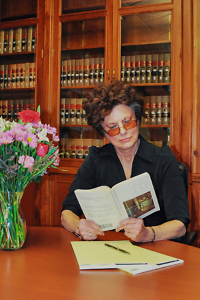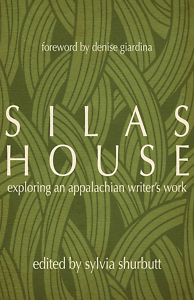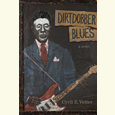Tales of a Preservationist
A new collection of essays highlights Silas House’s life and work
“Storytelling is in our blood, as Appalachians,” says Silas House in an interview included in Silas House: Exploring an Appalachian Writer’s Work. “It is part of us. The act of telling a story is the act of preservation, so I often think of myself as a preservationist by being a writer. In a way that’s my ultimate goal.”

A native of Eastern Kentucky, House has gained a unique degree of respect and adoration among his fellow Appalachian writers for his luminous novels, prolific music journalism, and theatrical works, as well as his activism. That activism led to Something’s Rising: Appalachians Fighting Mountaintop Removal. Coedited with his spouse, essayist Jason Kyle Howard, Something’s Rising contains essays and oral histories from the fight against exploitation of mountain communities and ecosystems by coal companies.
The essays collected in Silas House reflect the notably high regard in which House is held by his peers. Editor Sylvia Bailey Shurbutt has brought together a thoughtful group of Appalachian scholars and literary writers. Their detailed reflections and literary analysis provide a deep dive into House’s body of work.
Several of the essays, including Shurbutt’s opening chapter, focus on House’s Appalachian Trilogy, comprised of Clay’s Quilt (2001), A Parchment of Leaves (2002), and The Coal Tattoo (2004). These three novels follow a multigenerational story of two interconnected families in the Kentucky mountains.
A wide-ranging essay by scholar Donna Summerlin, a Chattanooga native, shows how the trilogy’s nuanced depictions of gender, race, and spirituality challenge the harmful stereotypes so often projected onto the lives of Appalachians. “In place of the nostalgic and often negative images of a backward region locked in the past,” Summerlin writes, “House offers a contemporary perspective on the strong religious roots, deeply ingrained values, and diverse ethnicities that have shaped life in the mountains.”
 Poet Maurice Manning contributes a graceful essay on the lyrical prose in Parchment. Manning writes that in the novel’s most lyrical passages, “the attention of the reader is deepened, drawn down into a dimension of feeling and significance that exists under the surface of the story.” “Tenth-generation Appalachian” Jennifer Adkins Reynolds chooses the trilogy’s many musical references as her subject, tracing the significant effect of music on the characters, plotlines, and thematic threads within the trilogy.
Poet Maurice Manning contributes a graceful essay on the lyrical prose in Parchment. Manning writes that in the novel’s most lyrical passages, “the attention of the reader is deepened, drawn down into a dimension of feeling and significance that exists under the surface of the story.” “Tenth-generation Appalachian” Jennifer Adkins Reynolds chooses the trilogy’s many musical references as her subject, tracing the significant effect of music on the characters, plotlines, and thematic threads within the trilogy.
House, a former writer-in-residence at Lincoln Memorial University and founder of the Mountain Heritage Literary Festival, has addressed the complexities of LGBTQ Appalachian experience in a number of his works, perhaps most movingly in his 2018 novel, Southernmost. Writer, musician, and storyteller Adam Booth offers a delightful exploration of the slightly broader concept of “Quare”-ness in House’s work, a local term that House has said his community used “when referring to a person they accepted as part of their world but didn’t quite fit in, whether he was socially inept or actually queer in the most modern sense of the word.”
Other genres of House’s writing also receive close examination, with particular attention to the ways House depicts marginalized characters. West Virginian writer Natalie Sypolt examines House’s theatrical works. Ohioan scholar Jacqueline Yahn focuses on House’s novels for young readers, 2009’s Eli the Good and 2011’s Same Sun Here (coauthored with Neela Vaswani). Yahn argues that these novels should be taught in Appalachian public schools, providing these young readers with narratives that reflect their “lifeworlds,” which are rarely found in mainstream YA literature.
Kentucky-based poet Marianne Worthington addresses House’s body of journalistic work. Along with House and Howard, Worthington co-founded the Appalachian-focused online literary magazine Still: The Journal. Her essay provides a detailed analysis of House’s approach to music journalism and his activist writings, as well as an annotated inventory of House’s notable essays from the past decade.
Worthington argues that, through his immersive prose, House “creates a sense of identification with his ‘story-hungry’ audience. Readers who identify with a storyteller can walk into the tale, live it, remember it.” Every writer included in Silas House communicates a powerful identification with House himself. Each thoughtful argument illuminates the rich, indelible beauty of House’s work.

Emily Choate is the fiction editor of Peauxdunque Review and holds an M.F.A. from Sarah Lawrence College. Her fiction and nonfiction have appeared in Mississippi Review, Shenandoah, The Florida Review, Tupelo Quarterly, Rappahannock Review, Atticus Review, Late Night Library, and elsewhere. She lives near Nashville, where she’s working on a novel.


